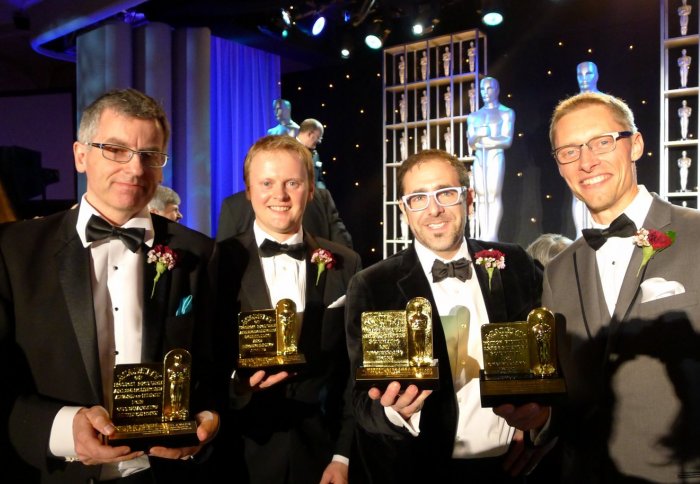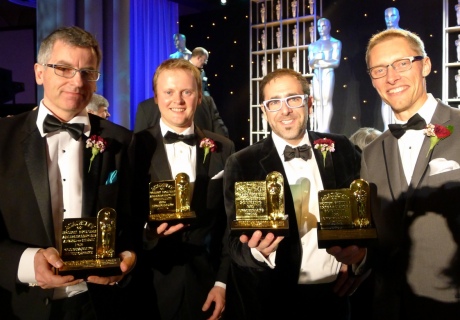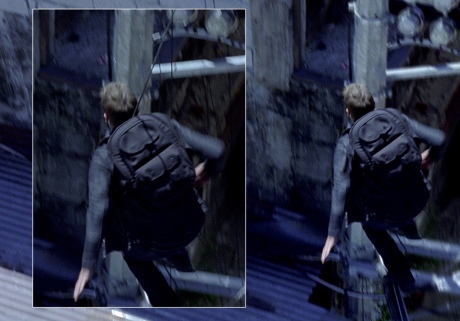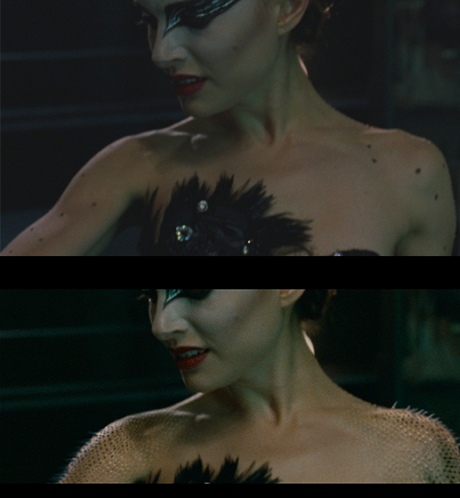

Two Imperial alumni have won Academy Awards for their work in visual film effects.
Last month some of biggest megastars on the planet picked up their iconic statuettes at the annual pinnacle of the film industry. But in the mix amongst Oscar winners Daniel Day-Lewis, Ben Affleck and Anne Hathaway were some rather lesser known names and faces, who were also duly recognised by the Academy.
Two Imperial alumni, Allan Jaenicke and John-Paul Smith (Information Systems Engineering, 2000/2001) received Oscars in the Scientific & Technical Awards category for their work with visual effects software company Imagineer, which they both helped to establish soon after graduating from the College.
“Although what we do at Imagineer is within the film industry, we’re really quite removed from the glamorous end of it – we’re making tools that get used by visual effects artists who work directly on films, and even they don’t get much exposure,” says CEO John-Paul, with typical modesty.

Alumni John-Paul Smith (second from left) and Allan Jenicke (far right) with their oscars
The truth is that key scenes in films like Harry Potter, Black Swan, Bourne Legacy would not have been possible without techniques originally developed at Imagineer.
The company was actually founded in 2000 by Allan and his friend Dr Philip McLauchlan of the University of Surrey, based on ideas they had formed around image mosaics. The algorithms they developed allowed them to stitch together multiple still images to form a mosaic panorama. But the real breakthrough came when they used these algorithms to stitch together frames of a video clip from a tennis match, where the camera was following player Stefan Edberg moving around the court.
Although what we do at Imagineer is within the film industry, we’re really quite removed from the glamorous end of it
– John-Paul Smith
CEO Imagineer
“After we processed the clips we were rather surprised to find that Stefan had completely disappeared from the video and we were left with footage with a clean background of the tennis court,” said Allan.
Essentially what happened was that, by tracking motion in the scene, background pixels behind the player in certain frames were serendipitously brought forward giving the appearance of deleting the player. Allan mentioned the result to someone he knew in the visual effects industry who suggested that it could be used for quickly removing wires and rigs used to support actors and objects in films. At the time that task was largely done by ‘painting’ them out manually by hand.

An example from the film Bourne Legacy where wires needed to be removed from a scene (image courtesy of Level 256)
“If you consider that it takes quite some time to fix a single photograph in image editing software like Photoshop. Now imagine you have a film sequence of several seconds with 24 frames a second – it’s a very laborious task and you also risk introducing artifacts. It’s doesn’t always look right.”
Allan and Philip evolved the original algorithms into Imagineer’s proprietary planar tracker software known as ‘mocha’, which allows visual effects artists working on films to not only remove objects from clips but also add new elements, and to do so quickly and seamlessly.
A key business decision says John-Paul, who joined the company in 2001, was to licence their software as an add-on to Adobe After Effects – a desktop post-production software package.
“That’s really our business model: people get introduced to us through the version of mocha that comes bundled with After Effects but we then sell upgrades to a more sophisticated version which includes many more tools and support for more applications. Everyone from students working on college projects, to churches shooting promotional videos, through to high-end visual effects studios has used the software,” says John-Paul.
Two films where mocha proved indispensable were Black Swan (2010) and Harry Potter and the Prisoner of Azkaban (2004).
During a scene in Black Swan, the actress Natalie Portman’s character undergoes a surreal metamorphosis, sprouting quills and feathers from her skin while she dances. It was a particular challenge to integrate real footage with these subtle special effects, in a very dynamic scene. But the software delivered.

Visual effects used in Black Swan (image courtesy of Look FX)
In Harry Potter meanwhile, mocha software was used to digitally remove the nose of the character Lord Voldemort, played by Ralph Fiennes, and create some evocative effects inside Hogwarts School.
“They have a large central area with stairs going up and lots of paintings on the wall that move around and talk and those paintings needed to be inserted into the film, because when they shot it on set it was just empty picture frames with green in them. We developed the planar tracker to be able to deal with that,” says John-Paul.
These high profile cases and the accessibility of their software package led to Imagineer being invited to apply for an award by the Scientific and Technical Committee of the Academy of Motion Picture Arts and Sciences.
The night itself was particularly memorable with both Allan and John-Paul remarking that they could never have imagined becoming Oscar winners back when they started out. Allan went to great lengths to mark the occasion.
Certainly there are things that I learned on the entrepreneurship aspect in the fourth year of [my Imperial] course which I’ve found useful in the business side of things
– John-Paul Smith
CEO Imagineer
“My wife’s favourite classic car is the Porsche 356, from Beverly Hills 90210, so I secretly found a place where I could rent one then picked her up from the hair salon and headed for the red carpet! It was a real Hollywood moment I guess.”
With offices in the US, Australia and Taiwan, Imagineer is now planning to expand its reach into the lucrative Chinese film market, with a mandarin language version of their software in the offing.
Still, both Allan and John-Paul remember their Imperial days well and say they have applied the majority of the skills they picked up, acknowledging the firm foundation it gave them.
“Certainly there are things that I learned on the entrepreneurship aspect in the fourth year of that course which I’ve found useful in the business side of things; just doing an accounting course at Imperial has helped me,” says John-Paul.
Allan, who has now left Imagineer to be a management consultant with McKinsey & Company, looks back fondly at the Bachelor’s project he did with Professor Wayne Luke (Computing).
While an Oscar remains a long shot for most graduates, the film industry is increasingly relying on technical innovations to remain relevant – as Oscar winner Life of Pi showed – and this will undoubtedly require top-notch science, engineering and business skills.
No harm in dreaming.
To read about another Imperial alumnus’ experience in the visual effects industry visit: //www3.imperial.ac.uk/newsandeventspggrp/imperialcollege/newssummary/news_12-2-2013-11-39-11
Article text (excluding photos or graphics) available under an Attribution-NonCommercial-ShareAlike Creative Commons license.
Photos and graphics subject to third party copyright used with permission or © Imperial College London.
Reporter
Andrew Czyzewski
Communications Division

Contact details
Email: press.office@imperial.ac.uk
Show all stories by this author
Leave a comment
Your comment may be published, displaying your name as you provide it, unless you request otherwise. Your contact details will never be published.




Comments
Comments are loading...